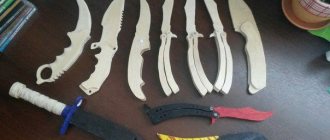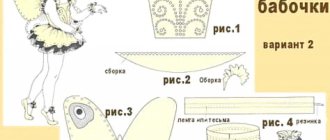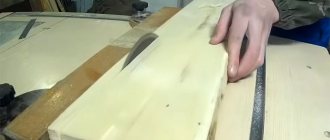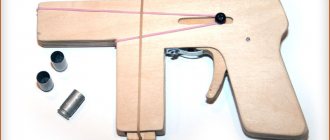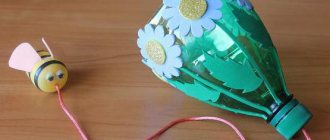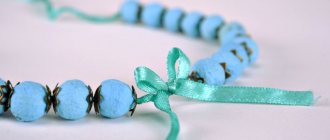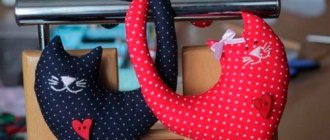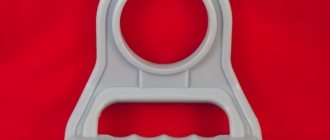Any normal man wants to make a knife with his own hands, which he will be proud of. Making a knife with your own hands is always a fascinating process; this knife seems cooler than all the knives in the world, since it contains manual labor and the imagination of the master.
It often happens that there is a desire to make a knife, but there is no clear idea of what shape to give the knife when making it. But as soon as you look at a bunch of drawings for making a knife, your own image appears in your head. This knife can be unique in shape, since you can combine part of the drawing of one knife and complement it with part of the drawing of another knife.
I hope that after viewing 280 knife drawings, you will have the desire and image to create your own knife that will inspire admiration from your friends.
Everyone makes a knife at their own discretion, one for pride, the other for practical use, this applies to hunters and butchers. Each knife has its own characteristics, one for killing an animal and butchering it, another for skinning, the next for cutting brushwood and making a road in the wilds.
You can easily determine which knife you need and will form the basis for its manufacture by looking at the knife drawings.
Therefore, it is not important to exactly copy the size from the knife drawing, the main thing is to see your unique image.
Many men like to have a beautiful and at the same time reliable knife with them. An item that is made independently is a special source of pride. The process of creating such a product with your own hands can take a lot of time and effort, but at the same time it is fascinating. A person is given unlimited options for designing a handle and blade; it all depends on imagination. Drawings of knives can help you decide on your choice.
It is important to understand that each knife is adapted for a specific area. A butcher, a fisherman or a hunter will use completely different tools. Therefore, when choosing a drawing, you should first decide on the purpose of use. It is also necessary to pay attention to the size so that the tool is convenient for its owner to use. You can borrow some part from the drawing or the whole element. The drawings will help turn your idea into reality and make you the happy owner of a new knife and delight your friends and acquaintances.
Read also: How to use blind rivets
Types of knives
Based on their scope of application, they are divided into several categories:
For those who like to throw knives, one will not be enough, and buying a set can be quite expensive. Therefore, everyone can try to make it themselves. Let's describe a few examples that are popular.
Cobra throwing knives are manufactured in the city of Zlatoust. Drawings of knives of various models are publicly available on the Internet, but at the moment only one is officially produced. The fact is that the developers chose to produce one, but well-designed and well-balanced knife. Factory-produced items are painted red to make them easier to find.
Throwing knife "Gadfly", drawings of which are also easy to find, are made of branded Zlatoust steel. An original discovery in design is the use of a regular cord as a handle. From the same manufacturer there is another throwing knife called “Udar”. The increased size and weight allow it to be thrown longer distances.
Throwing knife "Gadfly"
The requirements for knives for tourism, fishing and hunting recommend the use of stainless steel; finding a sketch is not difficult. The handles should be mounted, since the applied elements may crack under loads during operation. A camping knife may include several blades and tools that can be useful on a hike. Options for hunting and fishing must be sharp for a long time so that a person can use them to properly cut meat or fish.
What it is
For those readers who are unfamiliar with edged weapons, it is probably worth explaining what we are talking about.
Karambit is a combat knife. Its shape may vary depending on the manufacturer and the anthropometry of the wearer.
All versions, however, have two characteristics:
Please note: usually the blade is sharpened on the inside; You can rarely find double-sided sharpening.
- The handle is equipped with a hole for the thumb. It makes it impossible to lose the weapon in battle: even if the blade gets caught during a glancing blow, the handle will never slip out of the hand.
The evolution of weapons in different countries and even on different continents very often led to the fact that civilizations that had never contacted each other came to the same technical solutions. This observation fully applies to karambit: it was used in different cultures and, accordingly, has several names in different languages.
Here are some examples:
- Tiger Claw;
- Eagle Claw;
- Cock spur (chicken spur);
- Bladau;
- Kuku manan.
Let us clarify: the classic karambit has a blade length of 5-10 centimeters. The last two types of weapons are enlarged versions with blades of 20-30 cm.
Several options for blade and handle shapes.
Basic operations for making knives
Before you start creating the blade and handle according to the drawing, you should prepare all the necessary materials.
Read also: Glass hardness according to Rockwell table
The blade is made of tool steels, for example, P6M5 steel, which has good hardness. A blade made of this steel will not wear down for a long time. You can also use some carbon steels or material from car springs that have not been corroded.
Knife making process
The handle is most often made of wood, which dries out little and has sufficient strength. Suitable for this:
If the handle is overhead, then small diameter rivets will be required. They can be made from brass rod.
Tools you will need:
- drills and countersinks;
- sandpaper for rough processing and zero;
- electric drill;
- vice;
- files;
- hammer.
The technological process of making a hunting knife with your own hands consists of several stages.
- It is necessary to transfer the drawing with all dimensions to a metal plate.
- Cut the blank along the contour, grind off the excess and drill holes for the rivets.
- Make the cutting edge of the blade. Secure the future knife in a vice and grind off the metal with a file at a certain angle. Repeat the process on the reverse side if necessary. After filing, finish the process with sandpaper.
- Temper the blade in an oven or over a fire for 15 minutes. To do this, place the metal workpiece in close proximity to coals or another heat source. As soon as the metal turns red, you need to pull out the workpiece for a few seconds. The heating should be checked using a regular magnet. The heated metal stops being attracted to the magnet. In this case, heating must be stopped.
- Lower the hot workpiece into the oil with the cutting part facing down. The immersion should not be carried out completely, but only 2/3. Hold in this position for about a minute, and then slowly immerse completely in the oil.
- Temper in an oven at 400 °C for 45 minutes.
- Finish with sandpaper or other means.
- Make a handle from wood according to the sketch, drill holes for rivets.
- Impregnate the handle with special solutions to increase its service life.
- Assemble all parts.
- Polish the handle.
At this point the manufacturing process is completed and we have a beautiful and reliable homemade knife.
If you find an error, please select a piece of text and press Ctrl+Enter.
If you want to print a knife and then draw it well or make a knife from corrugated cardboard, then we have attached screenshots for this, and with the help of them you can first print the knives, and then do what you want. I will say right away that making a real copy of a knife is not so easy, so prepare yourself for a good sweat. After making a knife, add links to photos in the comments and I will publish the best ones in the article.
Read also: Husqvarna 142 stalls when pressing gas
How to make a karambit knife from wood
Any children's game, even not very childish, requires certain attributes. You can imagine the circumstances - the tropics in the backyard, a labyrinth in the garage, a “scary” dungeon in the basement, but the small, recognizable details of a fantasy world must be present. Weapons from popular games or films - for example, a karambit knife made of wood is one of these attributes.
The strongest wood
The main component of wood is cellulose . In its pure form, it is a solid and water-insoluble substance that has a higher strength-to-density ratio than many other materials. That is, this substance would make excellent knives, but in wood its concentration is only 40-50%. The remaining components of wood are water, hemicellulose and lignin, which deprive the material of its strength. American scientists were faced with the task of stripping wood of all unnecessary impurities and leaving only cellulose. A way to do this was found quite quickly.
Cellulose in its purest form
Manufacturing
So, how can you make a fairly reliable imitation with your own hands?
Sawing blanks
Dear reader, do you have a jigsaw? Yes? Great, put it aside and forget about it.
There are two ways to cut a wooden blank of complex shape from plywood 4–12 mm thick:
- Hand jigsaw;
- An improvised cutter, which can be a stationary circular saw or an angle grinder with a saw blade installed. In the latter case, the workpiece is securely fixed with a clamp.
Attention: if you are going to work with a grinder converted into a saw, do not forget about safety glasses and be extremely careful. In particular, you can put the tool on the table only after the disk has completely stopped.
The holes in the handle are selected with a ballerina or a feather drill of the appropriate diameter.
The hand jigsaw is still in demand.
Gluing
Universal PVA glue is quite suitable for it. The price of a small tube that we will need will be no more than 20-30 rubles.
The pieces will have to be glued and dried under pressure:
| Stage | Actions |
| 1 | Apply a layer of glue to the contacting sides of the workpieces |
| 2 | Clamp the product with a wooden clamp or metal vice, under the cheeks of which are placed scraps of plywood |
| 3 | Remove any squeezed out glue as far as a clamp or vice will allow. When it sets, it will be more difficult to get rid of drips |
Grinding
It can be done:
- On a belt or disc sander;
- On sandpaper;
Attention: emery grinds down soft wood very quickly. The workpiece is pressed against it with minimal pressure.
- By hand, on a block covered with sandpaper.
Do not strive for the sharpness of the blade: plywood ground to a razor sharpness will quickly break.
It is better not to sharpen the edges of the blade, but to slightly round it.
Impregnation
It is best to impregnate the blade with bakelite wood varnish to protect it from water. If for some reason it is not available, ordinary drying oil will do just fine. For deeper penetration into the veneer, it is preheated in a water bath.
Painting
Alkyd enamel PF-115 fits well on bakelite varnish. A charcoal black or ball (gray) color will look great on a knife. Over drying oil, plywood can only be painted with oil paint for exterior use.
To give a matte texture, after the paint has dried, the blade is treated with sandpaper - zero.
Sanding gave the painted surface a matte texture.
Shadow Daggers
These knives are the only dual melee weapons in the game. That is why they are in great demand. There are also a bunch of beautiful skins for them. A drawing of butting knives will allow you to make them in reality. This is a great souvenir or gift for any CS lover. And if you attach a good and rare skin to them, or reproduce the skin used by the one for whom this gift is intended, then his joy will know no bounds.
Shape and size
Drawings of karambit made from plywood, in general, can be obtained by simply modifying the sketch of a steel blade.
Sketch of karambit. All dimensions are indicated in millimeters.
The blade can be made in two ways:
- Made from a 12 mm thick plywood blank and two 4 mm thick handle plates. This option will imitate military weapons more reliably, but will require long and tedious grinding of the blade to a cross-section close to a conical one;
- A simpler instruction boils down to making a knife from five plates of 4 mm thickness. In this case, the karambit will follow the contour of a real weapon and lie quite comfortably in the hand, but up close the resemblance to a combat knife will be very sketchy.
Handle
Knives are decorated with different handles. The choice of material for their manufacture depends on the purposes for which the knife is intended, ease of use and personal preferences of the owner. Below are two ways to make a knife handle at home.
Wrapping the handle with paracord in a few minutes
Using a paracord cord as a knife handle is not only easier and faster, but also more practical. You will always have a couple of meters of cord with you, which can be used for a variety of purposes when surviving in extreme situations.
For the winding we need:
- cord, 2 – 2.5 m;
- thick adhesive tape or electrical tape;
- lighter or matches;
- scissors;
- gloves;
- screwdriver.
Before you start winding the cord, decide whether you need a lanyard loop and if so, where it will be, on the side of the blade near the stop or at the end of the handle. If it is available, in addition to the ability to hang the knife, in the first case you can insert your thumb into it to make it more convenient and secure to hold the knife, in the second, you can use it to remove the knife from the sheath, etc.
Paracord is wound in the following order:
- We wet the cord, and it stretches better, and when it dries, it will sit more solidly on the knife.
- We seal the knife blade with tape or tape to avoid accidental cuts or cutting the cord. It is better to perform all operations with gloves.
- We press one end of the cord on the head of the handle so that 10 cm remains free.
- We form a loop from the cord, laid along the handle so that the top of the loop protrudes a couple of centimeters beyond the cord winding area.
- Then, holding the knife in your left hand and pressing both ends of the loop with your thumb, with your right hand we begin to wind the cord around the handle, starting from its head. We make the winding tight, turn to turn, do not tighten it too much, keep in mind that the cord will still shrink after drying.
- Having brought the winding all the way to the blade, we thread the remaining end of the cord into the protruding part of the loop.
- We cut off the excess cord, leaving about 3–5 cm, and burn the end of the cord.
- After this, pulling the free end of the cord from the side of the handle head, we pull the loop under the winding until the end threaded into it is hidden under the winding. Avoid pulling the loop completely out, otherwise the entire winding will unravel.
Winding is complete. With this option of winding, we will not have a loop for a lanyard. If we want to form it, the winding is somewhat more complicated. Initially, two loops are placed on the handle on both sides of the knife.
To form a loop for a lanyard on the head of a knife, the end of the cord is pressed onto the head of the handle and one loop is pulled to the blade, then the cord is thrown over the head and a second loop is placed on the other side. The winding starts from the head of the knife. Having finished the winding, the remaining end is threaded through both loops near the blade and pulled under the winding by the loop in the headband, thereby forming it.
So that the loop is near the stop, we do the same thing, but on the contrary, we start laying and winding from the stop, and pull the loop there to tighten the clamped end under the winding.
Making an overhead handle as an alternative to paracord
If you are a classicist and want to make a regular handle, use wood for this purpose. It is more accessible, easier to work with, the wooden handle is more pleasant to the touch, does not get cold, slips less in the hand, and if processed correctly, does not absorb moisture. The handle of a knife can be made of oak, beech, maple, birch, walnut or mahogany. In order not to waste time and effort on preparing and drying wood, there are two simple ways to get it. The first is parquet, you can buy it in a special store, where, by the way, expensive varieties are sold individually. The second is old furniture, in the attic, in the garage, at the dacha, with friends, you can always find unnecessary household rubbish and use it. For the handle you need two dies, if you have a standard size hand, then 10 - 15 mm thick, this includes a margin for processing so that the thickness of the future handle is about 20 mm. The length of the workpieces is 150 - 200 mm, so that there is room for fixing them during initial processing.
In addition to the tree, we will need:
- dowels made of aluminum, copper, brass, iron according to the number of holes and the corresponding diameter;
- drill with drills or drilling machine;
- drills according to the number of holes in the handle of the same diameter;
- a sharpening or grinding machine, it can be replaced by a wood file and a lot, a lot of time;
- jigsaw or hand jigsaw, or see previous paragraph;
- an engraving machine or a file with a needle file;
- sandpaper of different numbers down to the finest;
- epoxy based adhesive;
- linseed oil;
- thick adhesive tape or electrical tape;
- vice, clamp.
We make the handle as follows:
- Before starting work, wrap the knife blade with tape or tape to avoid accidental cuts.
- The first step is drilling. We place the knife blank on a wooden block, press it with a clamp or, at worst, wrap it with tape and drill holes. To make the hole neat, first drill with a thin drill, and then drill out to the desired diameter. After the first hole has been drilled, we insert a key or a drill of the same diameter into it, this is done to fix it so that the die does not move. Let's move on to the next hole.
- We drill the second die in the same way.
- After drilling, we assemble the dies on a knife, using keys or drills, to make sure that all the holes match.
- Then, attaching the dies one by one to the knife using dowels or drills and a clamp, we outline the contour of the handle along the contour of the knife. It is advisable to mark the handle with a slight indentation, 1 - 2 mm, for subsequent processing.
- After marking, we cut out the handle with a jigsaw or grind it on a grinding wheel; in extreme cases, the file is in your hands.
- Preparing the dowels. To make the homemade knife look aesthetically pleasing, we will not rivet the dowels, but glue them in. To do this, use an engraving machine or a file to make chaotic cuts on the keys, in which the glue will harden and set. At the ends of the keys we remove an inclined chamfer at 450.
- Since after gluing it will be inconvenient to process the cheeks of the stop, we finally process and polish them using sandpaper.
- We carefully sand the handle halves from the inside so that they fit tightly when gluing to the plane of the knife shank.
- Before gluing, we make a final test assembly.
- We carry out the gluing itself according to the instructions for the glue. The assembly procedure is as follows: lubricate the inside of one half, insert dowels coated with glue into it, put a knife on them, and then the lubricated second half. We clamp the assembled handle in a vice and remove the excess squeezed out glue. Leave the clamped handle for a day.
- After the glue has hardened, using files, emery, a grinding wheel, and so on, we finally shape, grind and sand the handle of the knife.
- When the handle is completely polished, it's time to soak. It is best to saturate wood with linseed oil. You can buy it in a store for artists, they use it to dilute oil paints. The handle is kept in oil for three days to a week. The process can be speeded up by boiling the handle in oil for a couple of hours, but you must strictly monitor the temperature, otherwise the glue may leak.
- Then the handle should dry at natural temperature for about a month, during which time the oil will polymerize and the wood will harden and become impervious to moisture.
- After drying, the handle is finally polished with a soft cloth.
About the purpose of the product
Modern kitchen utensils are equipped with a special non-stick coating. Such dishes will last a long time if the owner is as careful as possible during its operation. To do this, you have to work with such equipment only with certain cutlery.
One of them is a wooden knife. It can be used when working with modern frying pans and pots without fear of damaging their non-stick coating. Unlike similar products made of glass, plastic and silicone, a wooden knife is considered environmentally friendly. It is mainly used for cutting minced meat.
The need for such a product forces some thrifty consumers to think about how to make a wooden knife themselves. Unlike a classic blade made of metal, making a knife from wood is much easier: this procedure is less labor-intensive. Knowing the technology, you can create quite good wooden knives. Photos and instructions for making such products are offered below.
Drawings of knives from CS: GO in the best quality
The ability to purchase weapons in the game is obvious. But for this you will need to either donate or play for a long time to earn the required amount of gold. The cost of this knife is quite high. There is a way to get such a knife for free - this is to use a cheat or, as it is also called a mod, a cache.
- Your account in the game may be banned and it will most likely not be possible to restore it.
- Game quality may deteriorate. FPS and ping will drop, which may affect comfort.
- No one guarantees that the mod will work normally, or that it will work at all, since it is not an official software product. Also, its performance may change over time when the official client makes any update.
- There are a large number of different files posing as game mods, but in the end they turn out to be viruses. Therefore, be careful.
In the video below you can see a butterfly knife in the game Standoff-2.
Below this video on Youtube there is another version of this mod, but it is a cache file in .obb format, and not an .apk application. Therefore, the cache will have to be installed manually.
Please note that both mods may affect the quality of the game, cause an account ban, and may not work on some devices.
Expert opinion
Strebizh Viktor Fedorovich, leading construction foreman
The compact, lightweight, aggressive and deadly appearance is complemented by fine and surgical precision and effectiveness in the hands of a skilled player. If you want to clarify something, please contact me!
Purpose and characteristics
The production of any knife is always preceded by the selection of the required type. Not only the characteristics of the future product, but also the conditions of its manufacture depend on the purpose and operating conditions.
The following types of knives are most often made independently:
- Hunting blades are the most favorite blades among masters. They have the opportunity to realize the full potential and knowledge of the creator, because the most serious requirements are imposed on products of this type. The main purpose of a hunting knife is to cut prey, so special attention is paid to the high hardness of the blade and its ability to hold an edge for a long time and not become dull. We must not forget about maintaining the required impact strength, which determines the ability of the blade to resist chipping in the event of an accidental impact on the bone of an animal. The inability to change the blade during hunting dictates the need to maintain high wear resistance.
- Tourist ones are very popular among lovers of outdoor activities. The conditions for their use determine the main tasks of such blades: cutting branches, planing wood chips, and solving a wide range of small hiking tasks. In nature, there is no way to correct the blade or sharpen it if it becomes dull, so special requirements are placed on the durability of the cutting edge. The high hardness required to maintain the required sharpness should not cause increased brittleness. This blade is often used as a substitute for an axe. Therefore, the butt of the blade must have considerable width and strength in order to withstand impacts.
- Survival knives are a derivative of tourist knives. Such blades are equipped with special devices for survival in difficult conditions. However, in the production of such products, in pursuit of the maximum number of functions, they often forget about the main purpose of the blade, paying less attention to the quality of its manufacture. The need for additional equipment may force the manufacturer to reduce the blade, reduce the thickness of the butt, which will negatively affect the performance of the product. Often the best solution is to choose a travel model that is more adapted to special conditions. It is better to have all other devices present in survival knives separately and not integrate them into one product.
- Kitchen knives are also popular for making yourself. Models on sale with a high-quality blade are usually very expensive, so making them yourself is profitable from an economic point of view. The special characteristics of the blade have requirements similar to those of hunting models. The blade must have high hardness in order to hold an edge perfectly and easily cut any product. Moreover, the blade should not chip when colliding with bones and a cutting board. This requirement is especially relevant, because solid glass cutting boards are now quite widespread.
There is often a misconception in which the purposes of a camping knife and a hunting knife are confused. Among newcomers to the field of tourism and hunting, there is an opinion that it is possible to make one universal blade that will cope with all the necessary tasks with equal success. However, this is not the case.
Touring models are designed primarily for rough work. High hardness is also important for them, but fragility when working at fracture is strictly unacceptable. For hunting models, hardness always comes first, because their most important characteristic is the sharpness of the blade. Cutting prey with a camping knife is quite problematic due to the relatively soft blade, and a hunting blade can simply be broken if you try to use it instead of a camping one.
It is impossible to create a universal blade for all conditions. You always have to improve some qualities by reducing other characteristics. If you plan to solve a wide range of tasks, it makes sense to make several knives, each of which will perform its own function.
Buy or make?
At the moment, you can find knives for every taste and budget; you can come across drawings of a knife made of plywood and plastic for those who are committed to making believable dummies. However, you can purchase a low-quality fake, even if you ordered a decorative version. There is nothing more reliable than an item made by the owner himself.
How to repair kitchen knives
Handle markings.
Very often the handle of a favorite item breaks. Don’t rush to throw away your convenient blade; take some time to repair it.
Find a small piece of moisture-resistant plywood large enough to make the handle. Two fragments measuring 18x3x1 cm will do.
Also stock up on self-tapping screws, liquid nails glue, a file, emery cloth, varnish or paint:
- An original handle for a knife made from plywood with your own hands will be ideal if you initially make a pattern of the blank from paper or cardboard.
- Transfer the outline to the plywood dies, tracing the template with a pencil. You should end up with two identical wooden halves.
Marking the handle mounting points.
- The blanks are cut out and applied to the blade. Don't forget to mark where the screws will fit.
- To prevent the plywood knife from falling apart in your hand, the inside of the dies is coated with glue, then a “sandwich” is assembled from the halves and the blade.
- The fitted parts are fastened with self-tapping screws and clamped in a vice for about a day. You can put the semi-finished product under a heavy press.
- After the glue has completely dried, the handle is polished with a file and emery cloth.
The photo shows the finished pen.
- For household knives, the instructions advise covering the finished product with waterproof varnish or painting it.
Note! Instead of fastening with self-tapping screws, you can rivet the handle. But the method is not available to everyone and is not so reliable. Threaded screws are held tighter, their heads are recessed and cleaned.
Legal assistant
Among the knives allowed by law to be worn and not considered edged weapons (with a blade length of up to 9 centimeters), there are also quite original and useful specimens. They have an affordable price and interesting appearance. For example, this is the “butterfly” of Filipino origin (the original name is “balisong”), the Malaysian-Indonesian knife “karambit” and the Nepalese “khukri”.
The last two have a strongly curved claw-shaped blade; the handle is often equipped with brass knuckles. The butterfly got its name thanks to the handle that extends in both directions, in which the blade is hidden when folded. When the arms open, they resemble wings.
Falchion Knife
This knife appeared in the game during Operation Bloodhound and since then many players are happy to buy it on the trading platform. It is difficult to find a more brutal melee weapon with which you can turn your enemy into a piece of mincemeat. Quite massive, in reality this knife also looks much more interesting than its gaming counterpart. Therefore, it is worth getting yourself a similar souvenir. Purchasing a falchion on the trading platform is also not very easy. You will need to buy cases of the same name, and for the knife itself other players will ask from 2,600 rubles.
Areas of application of wooden knives
If someone starts to argue that in the wild it is possible to make a wooden knife , in the absence of a steel one, you are probably looking at Baron Munghausen. Let's figure it out - harder material is used to process wood. For example, steel. It turns out that you have something to use to process wood, but you don’t have a knife?
If we talk about the souvenir version of the product, this is closer to the truth. You can make a truly exclusive thing from wood, and the manufacturing process is simpler and faster than metalworking.
What about practical applications? I have good news - yes, with the proper choice of material and good sharpening, you can use this knife for slicing cheese, boiled vegetables or minced meat . It is clear that they cannot cut up a carcass.
The guys who do hand-to-hand combat know best what a wooden knife is for: it’s a model of a weapon for practicing techniques. Now let's talk about making this “toy”.
